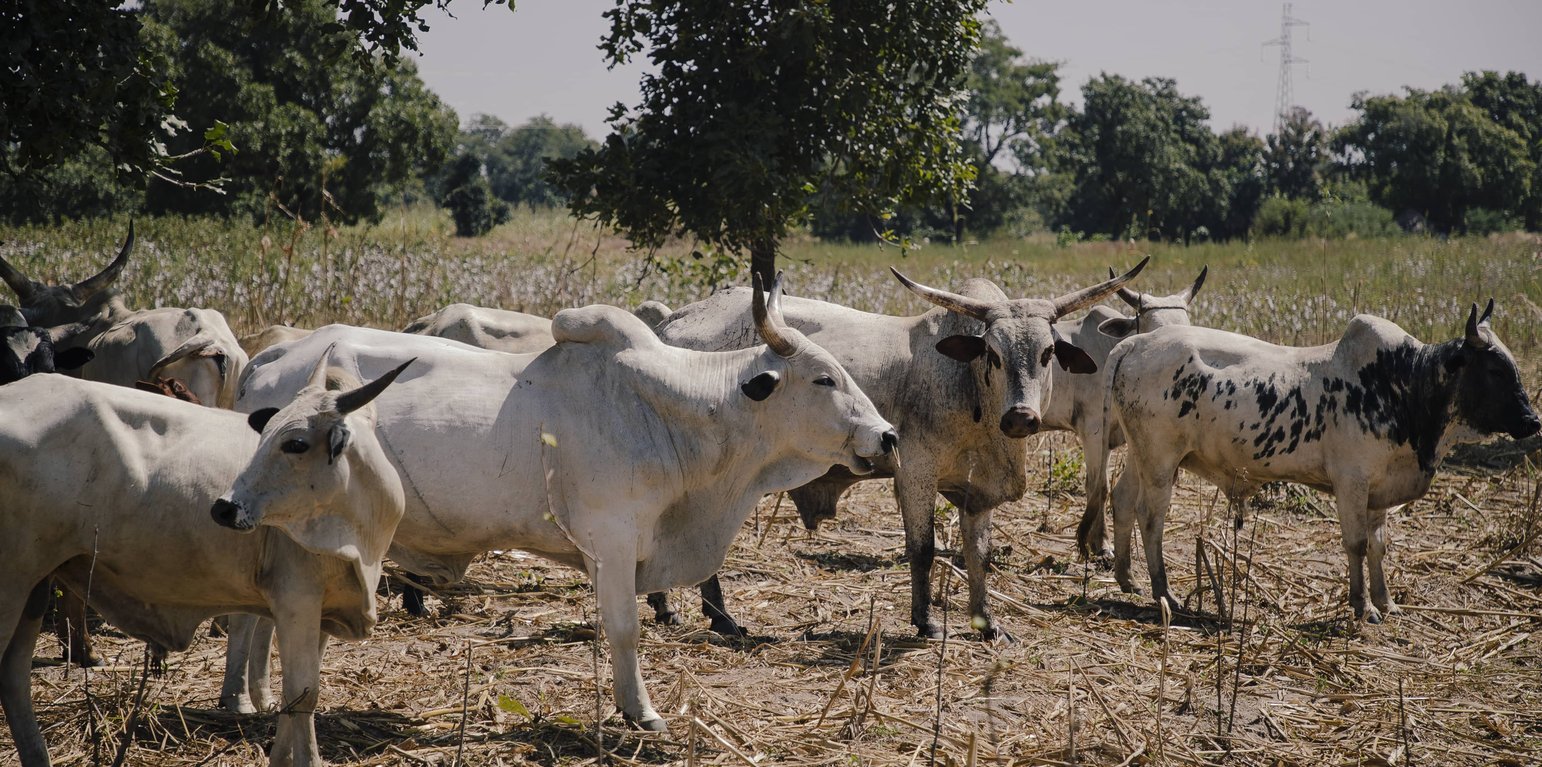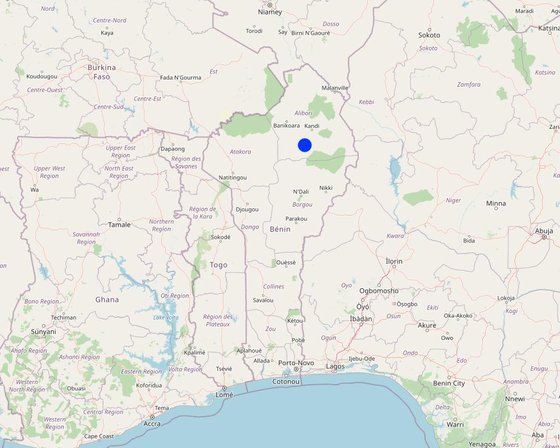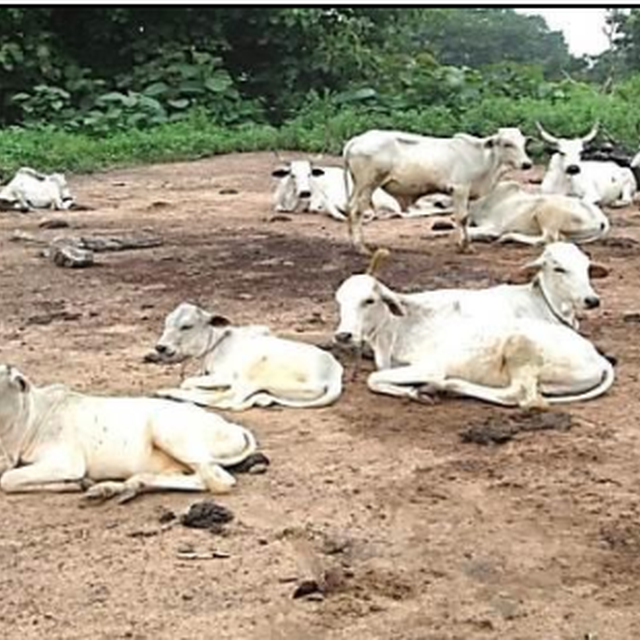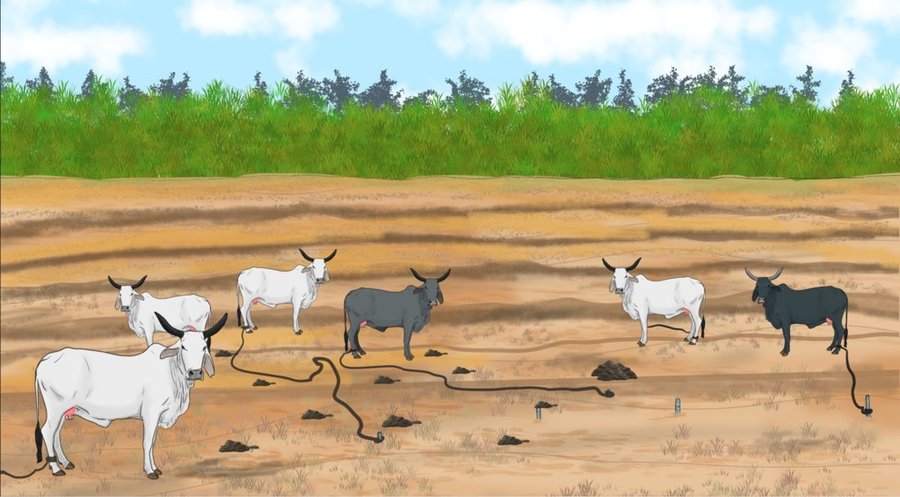



Livestock grazing, typically with the "Borgou" breed, takes place in the dry season in crop fields dedicated to food production (maize, millet) or cash crops (soy and cotton). This practice involves overnight confinement of the animals which are individually tethered with ropes and stakes.
To effectively deploy this technology, oxen are restrained from late afternoon to early morning in a field, during the dry season, to utilize their manure directly as organic fertilizer. The entire heard is transferred from one plot to another or within the same plot, at varying intervals, ranging from a few days to a maximum of two weeks, to distribute the manure. This grazing technique is the preferred method employed during the dry season for fertilizing cereal fields by farmers who have livestock or can borrow animals. For farmers, the advantage of this grazing approach lies in the fact that the animals themselves transfer the fertilizer with minimal investment (ropes, stakes, etc.). All animal droppings, including faeces and urine, are deposited on the land during the 14 hours they typically spend there during a day. In these conditions, the quantities of faeces deposited amount to approximately 50 kg of dry matter per Tropical Livestock Unit (TLU) per month. With faeces and urine emissions evenly distributed over several hours, animals' droppings are dispersed over the grazing land depending on the amount of time they spend there, the rest being concentrated in resting areas, night paddocks and watering places (streams).
Grazing takes place between January and April. The animals are removed from the fields as soon as the first rains fall, to start preparing the soil for planting crops.
Farmers without animals of their own request livestock from other farmers, offering to feed them in exchange for their use during the grazing period. To ensure the animals are adequately fed during this period, some farmers plant Gliricidia trees on their farms. These fast-growing leguminous fodder trees not only serve as a source of food for the animals but also contribute to stabilizing and restoring the soil through nitrogen fixation.

Location: Gogounou, Alibori, Benin
No. of Technology sites analysed: 2-10 sites
Spread of the Technology: applied at specific points/ concentrated on a small area
In a permanently protected area?: No
Date of implementation: 10-50 years ago
Type of introduction


| Species | Count |
| cattle - non-dairy beef | 5000 |



| Specify input | Unit | Quantity | Costs per Unit (CFA F) | Total costs per input (CFA F) | % of costs borne by land users |
| Labour | |||||
| Positioning stakes | Stake | 20.0 | 50.0 | 1000.0 | 100.0 |
| Equipment | |||||
| Machette | Unit | 1.0 | 3500.0 | 3500.0 | 100.0 |
| Construction material | |||||
| Stakes | Stakes | 20.0 | 50.0 | 1000.0 | 100.0 |
| Ropes | Ropes | 20.0 | 100.0 | 2000.0 | 100.0 |
| Total costs for establishment of the Technology | 7'500.0 | ||||
| Total costs for establishment of the Technology in USD | 12.19 | ||||
Quantity before SLM: 1700kg
Quantity after SLM: 6800
Producers using the system noticed that their maize yield in the same space doubled during the first year, and as they continued using it, it increased by a factor of 4.
The effectiveness of the system led producers to abandon the practice of cultivating crops over large expanses of land.
The reduced workload is associated with lower chemical fertiliser transportation activity, which also meant that fertilizer spreading activity dropped.
By enhancing harvests, the system empowers farmers to achieve greater self-sufficiency in food production.
Higher incomes mean improved access to healthcare
They easily understood the relevance of combining livestock farming and crop farming. Some producers who did not have animals, judging by their yields, finally started livestock farming and now have livestock they can use to apply the technique on their farms.
It is the farmers who ask the breeders to have their cattle grazed on their lands. However, this is done according to precise rules (animals must not be allowed to graze on crop residues beyond those agreed, and grazing ends as soon as the rainy season starts).
The greater the number of cattle in a herd, the greater the compaction of field access paths.
Animal droppings can occasionally contain sprouts of foreign plants, including species like Euphorbia hirta.
When animals are brought in for grazing, there is increased pressure on the watercourses near the grazing areas, as these serve as the water sources for the animals during this period.